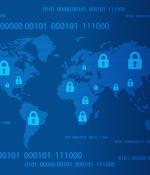Security News

Avast announces the official launch of Avast Business Hub, a new security platform designed to streamline how Avast's channel partners, managed security service providers, and business customers manage their cybersecurity solutions. Avast Business Hub consolidates a number of critical security and availability capabilities for SMBs. It consolidates endpoint protection, patch management, backup and recovery, and remote access and support solutions into an integrated security platform that enables organizations to easily manage and protect their devices, applications, data, and networks.

An FBI operation that gave law enforcement remote access to hundreds of computers to counter a massive hack of Microsoft Exchange email server software is a tool that is likely to be deployed "Judiciously" in the future as the Justice Department, aware of privacy concerns, develops a framework for its use, a top national security official said Wednesday. Many victims took steps on their own to safeguard their systems, but for those that who did not, the Justice Department stepped in to do it for them with a judge's approval.

Last year's abrupt transition to working from home shifted certain security objectives in order to protect all the new remote endpoints. Fileless malware attacks have grown in popularity largely due to their ability to evade detection by traditional endpoint protection.

The last year has probably seen a chunk of your workforce shift to home, negating any concept of an easily defensible corporate "Perimeter" around your systems and data. Probably, have more data than ever before to worry about, as your business increasingly relies on analytics and AI. But where is that data? In a data centre? Somewhere in the cloud? On your workers' home networks and devices?

State and local governments will be required to spend a portion of nearly $1.9 billion in annual federal public safety grants on the fight against domestic extremism and improved cybersecurity, the Department of Homeland Security said Thursday. Secretary of Homeland Security Alejandro Mayorkas said it was the first time since the agency, which was created in response to the Sept. 11, 2001, terrorist attacks, had directed that domestic violent extremism be specified as a national priority in programs to help state and local law enforcement agencies respond to emergencies.
![Special minisode: “20 years of cyberthreats that shaped infosec” [Podcast]](/static/build/img/news/special-minisode-20-years-of-cyberthreats-that-shaped-infosec-podcast-small.jpg)
Naked Security's Paul Ducklin interviews Sophos expert John Shier about his recently published paper, "20 years of cyberthreats that shaped information security". Join John on a dizzying journey all the way from legendary viruses such as ILOVEYOU and Code Red, which flooded the internet in 2000, to present-day ransomware gangs like Ryuk and REvil, who are extorting millions of dollars in blackmail money per attack.

As COVID-19 continues to threaten the world, these types of attacks are expected to persist, according to cyber threat intelligence provider Check Point Research. In a report released Tuesday titled Securing the 'next normal, Check Point discussed its 2021 predictions in the face of the pandemic.

HackNotice announced today their new analysis and visualization suite, Risk Explorer. With HackNotice Risk Explorer, everyone is able to visualize, analyze, and filter their risk, understanding which events impact them the most, relationships between their digital identities and exposures, and see their exposed information in easy to understand ways.

Report: Despite more cyberthreats during COVID-19, most businesses are confident about cybersecurity
Seventy percent of major organizations were strategizing to pour more money into cybersecurity efforts as a result of the coronavirus pandemic, according to a report in May. Gartner has predicted that, despite COVID-19, total global spending on cybersecurity will hit $123.8 billion in 2020. A new report-CompTIA's State of Cybersecurity 2020-took the temperature of how the enterprise has responded to security during COVID-19, surveying 425 US businesses.

Almost three quarters of all requests for analysis to Kaspersky's Threat Intelligence Portal were for trojans, backdoors, and droppers. Organizations and individuals must grapple with a variety of cyberthreats and malware from phishing attacks to ransomware to viruses to trojans and more.